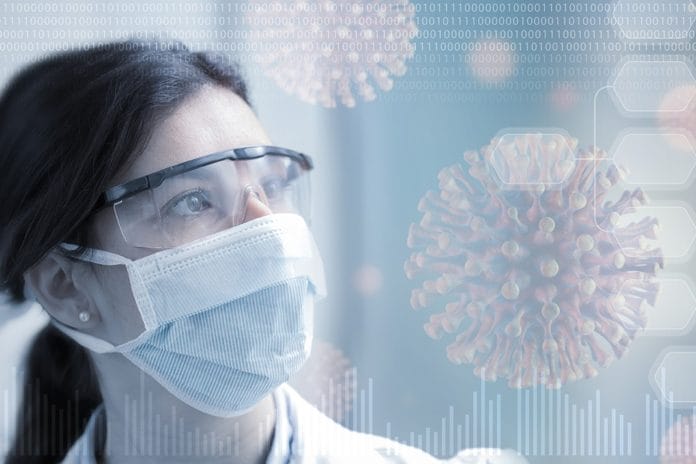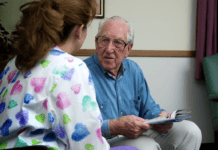Editor’s Note: Information about COVID-19 is changing on a daily, sometimes hourly, basis. We have made every attempt to ensure this article is up to date at the time of publication, but with the rapid changes occurring, some information may have changed since publication. Please visit https://www.coronavirus.gov/ for the latest news and information on COVID-19.
Unless you are living under a rock, you have heard about the novel coronavirus, SARS-CoV-2, which causes the disease COVID-19. The dental community is responding in a variety of ways. Some are quite flippant, while others are in panic mode.
I would like to suggest there is a happy medium. Let’s not panic yet; just stay diligent and aware. It is easy to achieve this by just listening to the experts. However, the dental community has little guidance from many of the organizations we have grown to trust and turn to in similar situations. Dentists are being left to make the decision themselves on what the best way to proceed with practice protocol. Only a few states have offered guidance through the department of health.
The best way to make these decisions is to follow what the science is telling us. There are a lot of unknowns about this virus. We are constantly learning new information. It is very difficult to keep up and, to add insult to injury, some people are peddling “natural cures” and making false claims about the virus. And let’s not forget about the rampant conspiracy theories. Even if you believe these stories and recommendations, you must not ignore what the science is telling us about this novel virus.
Structural Binding Mechanism
Knowing and understanding the structural binding mechanisms can help determine the reservoirs and development of antivirals as well as a vaccine. Coronaviruses are large, enveloped, positive-stranded RNA viruses. They are composed of three structural proteins associated with the viral envelope, the membrane protein, the envelope protein, and the spike protein. Spike proteins mediates cell entry of the virus, while the membrane protein and envelope protein are involved with virus assembly.
The spike proteins form large protrusions from the virus surface. These proteins appear as crown-like structures that give the virus its name (corona in Latin means crown). These spikes contain three segments, a large ectodomain, a single-pass transmembrane anchor, and a short intracellular tail.
For simplicity, let’s focus on the ectodomain. The ectodomain consists of two subunits, S1 is a receptor-binding subunit and S2 is a membrane fusion subunit. The receptor binding and membrane fusion are the initial and critical steps in the infection cycle.1
Studies comparing SARS-CoV (SARS-1) and SARS-CoV-2 (SARS-2) show the binding mechanism is very similar. Both viruses enter cells through ACE2 receptors. This is where the binding and membrane fusion occurs.2 In these studies that compared SARS-1 and SARS-2, it was discovered that SARS-2 had a higher binding affinity to ACE2 receptors than did SARS-1.2,3
This is important because this indicates that less viral particles or virions are necessary to cause infection. This also may be one of the reasons it is so easily passed from person to person.
Transmission and Sustainability
The basic reproduction number or R0 for SARS-CoV-2 is estimated to be around 2.79; this is more in line with the 1918 Spanish flu pandemic (R0 approximately 2) than that of seasonal flu (R0 1.3). What this number tells us is that for every person infected, they will likely infect 2-3 more people. The R0 can be driven down by public health measures and the development of a vaccine and anti-virals. In the case of Wuhan, at the start of the epidemic, before it became a pandemic, the R0 was estimated to be 3.86, however, after the implementation of the suspension of public transport, school, and most work; and cancellation of all public events, the R0 improved significantly to 0.32.4
Several routes of transmission have been identified. These include direct transmission through droplet inhalation (from coughing and sneezing), contact transmission through contact with mucous membranes (eyes, nose, and mouth), airborne through aerosols (produced by medical and dental procedures), and feces through the fecal-oral route.
There is clear evidence this virus can be spread via asymptomatic carriers. The incubation time ranges from one to 14 days. The risk of transmission in dental settings is higher due to frequent exposure to saliva, blood, aerosols which leave the virus airborne, as well as contaminated environmental surfaces.5
SARS-CoV-2 is detectable in aerosols for up to three hours, on copper for up to four hours, 24 hours on cardboard, and up to two to three days on plastic and stainless steel.6 This should concern dental professionals considering aerosols and droplets were the main routes of the spread of the virus.5
Cytokine Storm Syndrome
It has been well documented that the high crude fatality rate associated with the 1918 Spanish flu pandemic was related to cytokine storm syndrome. The same appears to be true for some patients infected with COVID-19. Respiratory epithelial cells, the cells most affected by COVID-19, are the main players in the production of cytokine storm syndrome.
Cytokines are small proteins that regulate immunity and inflammation. When they are working properly, they help fight off infections. However, when they go awry, it can be deadly. Ultimately, a cytokine storm is the result of the immune system going out of control. Overproduction of immune cells leads to more inflammation, organ failure, and death.7
Doctors are encouraging the use of testing to determine if a patient infected with COVID-19 is experiencing cytokine storm syndrome. If so, case treatment can be administered as soon as possible. Interestingly, to treat cytokine storm syndrome, it is necessary to administer immune-suppressing drugs. Currently, management of the disease is supportive by administering a simple test for cytokine storm syndrome; doctors may have an already approved medication at their disposal to better treat these patients and lower the fatality rate.8
Vaccine
Before discussing where we are with the vaccine, I think it is important to understand the process of getting a vaccine approved to be distributed to the public. I’ve seen some concern about the fact that this vaccine will be “fast tracked,” not only by fellow hygienists, but also by some in the general public. But before I can really explain what that means, I’ll need to explain the process of approval.
There are four phases and a preclinical phase in drug and vaccine development. Preclinical trials are done in animals, and in vitro, it is to determine toxicity, including reproductive and developmental toxicity, carcinogenicity, pharmacokinetics, and pharmacodynamics. In some cases, this can take more than 10 years to determine.
At the end of the studies, researchers review the findings and determine if the drug/vaccine should move forward to human trials.9 The review team consists of a project manager, medical officer, statistician, pharmacologist, pharmacokineticist, chemist, and microbiologist. Only 10% of drugs/vaccines make it past this stage of research.
- Phase 1 clinical trials last several months and recruits anywhere from 20 to 100 participants. This phase of the trial evaluates pharmacokinetics and tolerability in humans. This is usually studied in single and repeat doses and evaluates any organ toxicity that could lead to renal or hepatic impairment. The goal is to limit risk and maximize the benefits by finding the proper dose. Around 70% of drugs/vaccines that complete this phase will go on to phase 2 clinical trials.10
- Phase 2 clinical trials last several months to two years and recruit several hundred participants. In this phase, researchers are evaluating the efficacy and side effects. This phase of the trial is not large enough to determine if the drug/vaccine will be beneficial. That is why yet another phase is necessary. Around 33% of the drugs/vaccines will move on to the next phase.10
- Phase 3 clinical trials last one to four years and recruits between 300 and 3,000 participants. The purpose of this phase is to determine efficacy and monitor for adverse effects. Due to the length and size of these studies, the results are more likely to show any long-term adverse effects of the drug/vaccine. Around 25-30% of the drugs/vaccines will move on to the next phase.10
- Phase 4 clinical trials are also referred to as post-marketing surveillance. This phase is conducted after the drug/vaccine has been FDA approved and marketed to the general public. This includes several thousand participants. This part of the clinical trial is to continue to evaluate safety and efficacy. There is no time frame, and it is continuous monitoring.10
To address the many concerns that I have seen regarding the COVID-19 vaccine being “fast tracked,” I want to add I’ve omitted a lot of paperwork and the correspondence that goes on during the clinical trials and approval process for drugs/vaccines. What it means to “fast track” a drug or vaccine is that it cuts down the wait time for correspondence from the FDA and the timeframe for paperwork.
For a drug/vaccine to be “fast tracked,” the developer must show a need for it due to serious unmet medical conditions. This would include a vaccine with the “ability to address emerging or anticipated public health needs.” The new emerging infectious disease, COVID-19 certainly qualifies. This allows for more frequent meetings with the FDA, ensuring questions and issues are resolved quickly allowing for quicker drug approval and distribution to the public.11
Fast tracking in no way changes the approval process by skipping steps. All phases of clinical trials must be completed except for preclinical trials in certain circumstances. Hence the reason we are looking at a minimum of one to two years before the vaccine is released to the public.
Currently, an experimental vaccine has entered phase 1 clinical trials. The vaccine is called mRNA-1273, and it was developed by the National Institute of Allergy and Infectious Disease (NIAID) scientists and a biotechnology company. It is being funded by the National Institute of Health.12 The target of the vaccine is the above-mentioned spike protein.13 Because the spike protein is necessary for fusion and host cell infection, by preventing the spike proteins’ ability to fuse and enter the cell, the vaccine will prevent infection. The vaccine will hopefully create a robust immune response leading to memory B-cells that will recognize the spike protein and attack the spike protein on the virion and eliminate it preventing infection of the virus.14
Knowing the likelihood that the first vaccine will make it to the public is quite small, other scientists and labs are working on others as a back-up in the unfortunate event that this one doesn’t make it through all phases of clinical trials.
Dentistry May Never Be the Same…
I foresee some big changes in infection control and PPE in dental practices going forward. The last big change that shook up dentistry was in the 1980s with the discovery of HIV/AIDS and the increasing presence of hepatitis B. The changes and recommendations set forth by the CDC were hard to accept for many dental professionals at the time; however, not following these guidelines today would make clinicians and patients cringe.
The list of the CDC’s recommended precautions for preventing transmission of blood-borne pathogens was implemented in August 1987. The list included the following: routine medical history, protective eyewear, new gloves for each patient, sterilize handpieces after each patient, sterilize all instruments after each patient, surgical facemasks, needles placed in puncture-resistant containers, wrapping hard to disinfect equipment and surfaces, and chin-length plastic face shields.15
Two years after the implementation of these updated infection control measures and PPE, only around 80-90% of dental practitioners were following the guidelines. Change is hard, but often necessary. I hope when changes are proposed, dental practitioners will adhere much more readily than what was observed in the late 1980s and early 1990s.
Everyone is on edge wondering what some of the changes may include. Although no one knows for sure, I think we can all agree that there will be some major changes moving forward. I’ve brainstormed with some of the top professionals in dentistry who specialize in infection control. Here are a few changes that have been suggested that we might see: less open bay style offices, better filtration systems, mandatory use of HVE (possibly assisted hygiene to achieve this), N95 masks (at minimum ASTM level 3), more barriers, new lab coat for each patient, knee length lab coats, and new hair bonnet for each patient.
This pandemic is certain to change dentistry. It has already been an emotional rollercoaster for many. Together, I believe we can make this profession even better and safer for ourselves and our patients.
Once we have an effective and safe vaccine, we will see a change in the rapid transmission of this virus. However, I hope that will not end with dental professionals being complacent about infection control and PPE. Another pandemic could be right around the corner, and I personally would like to be better prepared for it in the future.
Now Listen to the Today’s RDH Dental Hygiene Podcast Below:
References
- Li, F. Structure, Function, and Evolution of Coronavirus Spike Proteins. Annu Rev Virol. 2016; 3(1): 237–261. DOI:10.1146/annurev-virology-110615-042301 Retrieved from https://www.ncbi.nlm.nih.gov/pmc/articles/PMC5457962/.
- Liu, Z., Xiao, X., Wei, X., et al. Composition and Divergence of Coronavirus Spike Proteins and Host ACE2 Receptors Predict Potential Intermediate Hosts of SARS-CoV-2 [published online ahead of print, 2020 Feb 26]. J Med Virol. 2020; 10.1002/jmv.25726. DOI:10.1002/jmv.25726. Retrieved from https://pubmed.ncbi.nlm.nih.gov/32100877-composition-and-divergence-of-coronavirus-spike-proteins-and-host-ace2-receptors-predict-potential-intermediate-hosts-of-sars-cov-2/?from_term=ACE2+and+covid+19&from_pos=3.
- Tai, W., He, L., Zhang, X. et al.Characterization of the Receptor-binding Domain (RBD) of 2019 Novel Coronavirus: Implication for Development of RBD Protein as a Viral Attachment Inhibitor and Vaccine. Cell Mol Immunol(2020). Retrieved from https://www.nature.com/articles/s41423-020-0400-4#citeas.
- Frieden, T.R., Lee, C.T. Identifying and Interrupting Superspreading Events—Implications for Control of Severe Acute Respiratory Syndrome Coronavirus 2. Emerg Infect Dis. 2020 Jun. Retrieved from https://wwwnc.cdc.gov/eid/article/26/6/20-0495_article#suggestedcitation.
- Peng, X., Xu, X., Li, Y., Cheng, L., Zhou, X., Ren, B. Transmission Routes of 2019-nCoV and Controls in Dental Practice. Int J Oral Sci. 2020; 12(1): 9. Published 2020 Mar 3. DOI:10.1038/s41368-020-0075-9. Retrieved from https://www.ncbi.nlm.nih.gov/pmc/articles/PMC7054527/.
- New Coronavirus Stable for Hours on Surfaces. National Institute of Health. Retrieved from https://www.nih.gov/news-events/news-releases/new-coronavirus-stable-hours-surfaces.
- Hansen, J. COVID-19: Do Not Forget the Host Is Treating the Disease. UAB News. 2020 Mar 16. Retrieved from https://www.uab.edu/news/research/item/11176-covid-19-do-not-forget-the-host-in-treating-this-disease
- Mehta, P., McAuley, D.F., Brown, M., et al. COVID-19: Consider Cytokine Storm Syndromes and Immunosuppression [published online ahead of print, 2020 Mar 16]. Lancet. 2020; S0140-6736(20)30628-0. DOI:10.1016/S0140-6736(20)30628-0. Retrieved from https://www.thelancet.com/journals/lancet/article/PIIS0140-6736(20)30628-0/fulltext.
- Step 2: Preclinical Research. U.S. Food & Drug Administration. Retrieved from https://www.fda.gov/patients/drug-development-process/step-2-preclinical-research.
- Step 3: Clinical Research. U.S. Food & Drug Administration. Retrieved from https://www.fda.gov/patients/drug-development-process/step-3-clinical-research.
- Fast Track. U.S. Food & Drug Administration. Retrieved from https://www.fda.gov/patients/fast-track-breakthrough-therapy-accelerated-approval-priority-review/fast-track.
- NIH Clinical Trial of Investigational Vaccine for COVID 19 Begins. National Institute of Health. Retrieved from https://www.nih.gov/news-events/news-releases/nih-clinical-trial-investigational-vaccine-covid-19-begins.
- Clinical Trials. Safety and Immunogenicity Study of 2019-nCoV Vaccine (mRNA-1273) to Prevent SARS-CoV-2 Infection. U.S. National Library of Medicine. Retrieved from https://clinicaltrials.gov/ct2/show/NCT04283461?term=mrna-1273&draw=2&rank=1.
- Palm, A.E., Henry, C. Remembrance of Things Past: Long-Term B Cell Memory After Infection and Vaccination. Front Immunol. 2019; 10: 1787. DOI:10.3389/fimmu.2019.01787. Retrieved from https://www.frontiersin.org/articles/10.3389/fimmu.2019.01787/full.
- Sampson, E., Dhuru, V.B. Infection Control in North American Dental Schools. J Dent Educ. 1989; 53(9): 532–537. Retrieved from https://onlinelibrary.wiley.com/doi/abs/10.1002/j.0022-0337.1989.53.9.tb02344.x?sid=nlm%3Apubmed.












